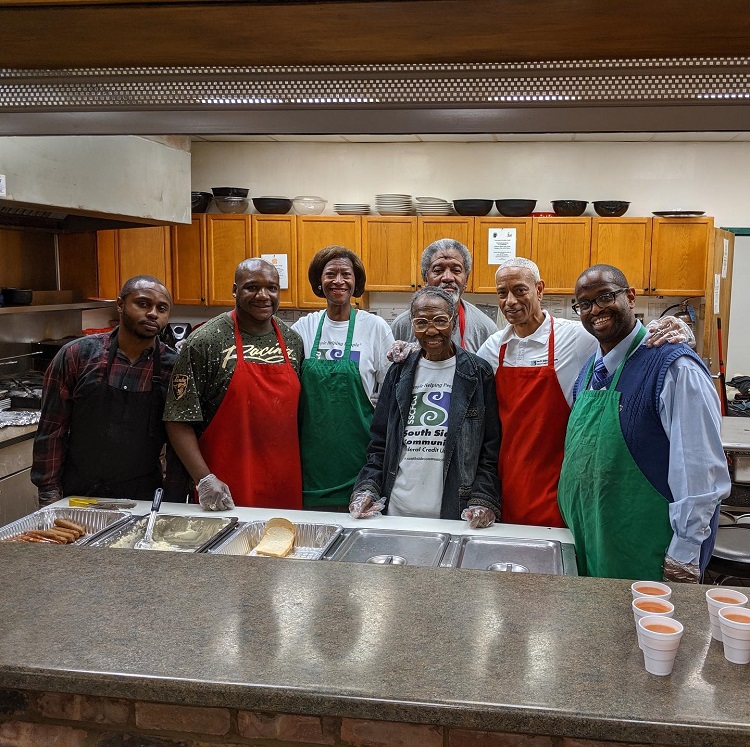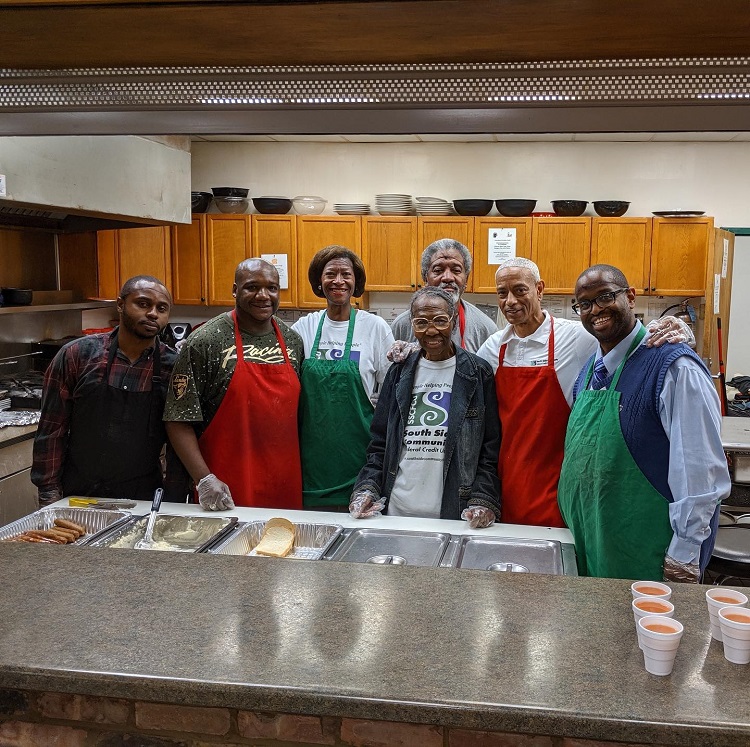
Gregg Brown, CEO, South Side Community FCU
Gregg Brown is the founding CEO of South Side Community Federal Credit Union ($5.1M, Chicago, IL). The credit union was founded in 2003.
SSCFCU’s mission is to equalize economic power and to fight poverty by improving financial literacy and providing access to credit and savings services. In the past three years, the credit union has received $491,176 in grants from banks, trusts,housing development organizations, and more.
What populations do you serve?
Gregg Brown: SSCFCU was founded in 2003 by a group of community organizers and businessmen. They saw a need to establish a financial institution sensitive to the needs of South Side Chicago residents, 40% of whom were either unbankedor underbanked. This is a population that highly patronizes payday lenders for loans and currency exchanges and who seems to greatly distrust the mainstream banks.
It’s a testament to our resiliency that we are still here when many community-focused financial institutions have had to close, particularly those owned and operated by African Americans. Those are the first types of institutions to go under becausethey cater to populations with unemployment levels that are difficult to bank on. CDFIs like us that serve the underserved are taking financial risks, but we believe we have a better track record of this type of service than any other institution.
What do these populations need from a financial institution?
GB: We offer non-traditional products, services, and programs tailor-fitted to the community we serve. We operate a HUD-approved housing counseling department, we have received our CDFI-certification, low-income designation, and we area minority depository institution as well.
CU QUICK FACTS
South Side Community FCU
Data as of 06.30.20
HQ: Chicago, IL
ASSETS: $5.1M
MEMBERS: 1,550
BRANCHES: 1
12-MO SHARE GROWTH: 23.8%
12-MO LOAN GROWTH: 22.7%
ROA: 0.81%
Our success as a credit union depends on economic conditions as well as our ability to offer high-touch and high-tech service. We’re good at high-touch, but it takes longer for an institution like ours to build the capital necessary to implementturnkey technology. We’re working on it, and it’s one of the reasons we raise grants.
Our formula is to educate people with our eight-week financial education program where we teach basic money management skills. That’s part of our housing counseling program that puts potential homeowners on the road to becoming first-time homebuyers.As a CDFI, we are helping people acquire and retain assets not only to help them become individually successful but also to contribute to a larger structural change recycling dollars in a manner that builds community economic capacity.
When did SSCFCU become a CDFI? Why?
GB: We’ve been CDFI-certified since our beginning, so we were able to raise funds to build capacity to do more work.
In recent years, we’ve seen a lion’s share of the Fund’s money start to go to loan companies and even banks that have more money to invest in grant writing. This has made things highly competitive. We won a few grants from the Fund earlyon, but we’ve been unsuccessful for the past few years. Now, there’s a stronger advocacy arm for community development credit unions to make sure these types of institutions are able to access those resources.
As I said before, we participate heavily in financial education and in recirculating funds in neighborhoods to create economically sustainable communities. The resources we’re provided through this certification help with that.
As a CDFI, we are helping people acquire and retain assets not only to help them become individually successful but also to contribute to a larger structural change recycling dollars in a manner that builds community economic capacity.
How competitive is the grant process? How do you stand out from other applicants?
GB: We need funds to remain viable and offer solutions to our communities. I serve as the CEO, CFO, and resource development officer of SSCFCU. I write grants with one other person on my team, and we’re still trying to figure outhow to better get the word out about what we do. We have to rely on sources of income like this to preserve our financial institution through the COVID-19 crisis because we have a lot of low-income families that depend on us for their banking. We’relooking for ways to outsource some of that grant writing work because the more grants we put in, the more we get back.
Fortunately, more people are discovering our work. We don’t limit our fundraising to organizations. We’ve been able to raise grant funds from banks and foundations as well as individual donors over the years. We’ve had people kindlycontribute to our community development capital campaign. If we can get the word out further, there might be more individuals inclined to support our work.
Who or what is historically the aim of your community work? What challenges do you look to address? Why?
GB: We started with debt consolidation and payday alternative loans to compete with the financial predators that were siphoning the economic blood out of the community. Beyond that, to fulfill our mission, we need to help people acquireassets to start and own a business or to own a home.
The people we serve in our communities are more than just renters, they are homeowners. We want them to be able to patronize establishments that are owned by community residents. If we can do that, we’re creating more jobs and circulating moneywithin the community.
But first and foremost, we want to be the conduit that enables our members to own homes.
How has COVID-19 changed your operations or your community work?
GB: COVID-19 has forced us to engage more in online remote services. We encourage our members to sign up for home banking. We also offer a free debit card program where our members can access their funds without having to physically cometo the credit union.
We have set up COVID relief programs, such as a 90-day deferral program, for families that have been impacted. That’s what we started with, but it’s still evolving. We’re looking at what we can do within reason to ensure we all comeout of this pandemic. We recently began participating in the Illinois Housing Development Authority’s Community Outreach Assistance Program. The program offers emergency rental assistance to keep people current on their rent or mortgage.

South Side Community FCU’s leadership volunteers at Matthew House, a community-based nonprofit that provides food, shelter, housing, and supportive services to those in need.
Our counselors are working remotely and can connect with members through FaceTime or Zoom. We now conduct all our financial education classes via Zoom and hope that opens up the door for more people to participate and receive services from the comfortof their own homes.
How has COVID-19 changed the way you think about the credit union and its mission? How have you evolved?
GB: External factors have changed and made it more challenging for people to earn and save money. How I think about the mission has not changed.
Despite our size, we’re working to build our technology, which will ultimately make us more competitive and attractive to potential members, some of whom are disenchanted with the banks that are not making loans like they should. They recognizethat credit unions treat them as more than an account number.
Credit unions are motivated by the principle of people helping people, and we’re driven by mission as opposed to profit. That’s a distinguishing factor that’s needed now more than ever. In times of crisis, you need people who care aboutpeople.
Why are CDFI-certified credit unions important to the financial services landscape?
GB: The certification has value in that it communicates the work we do within the broader community and helps us gain awareness for those who are in a position to fund our work. But we’ll do this work with or without that certification.The work is the work, and it is worthy of investment.
The CDFI certification provides a quick reference that we are among the premier community development organizations. There are many structural problems we look to address, whether it’s the wealth gap or racial inequality, and the certification allowsus to build a framework and start a conversation that will lead to a solution.
What lessons or advice do you have for credit unions considering CDFI certification?
GB: We’re stronger united. If there are resources that can help a credit union help its members achieve financial stability, then it’s part of our mission to do everything we can to help them.
I would encourage them to stay connected to their local credit union leagues or organizations that operate in this space. Whatever your community is facing or the work you do, other entities are also doing that work.
This interview has been edited and condensed.
Purpose=Impact
Sustainable Business Strategy with Rebecca Henderson teaches credit union leaders that being purpose-driven goes further than being a community-forward organization and helps them re-examine their part in ensuring the long-termprosperity of members, employees, communities, and the environment.
Join us for our next cohort and re-think you mission, purpose, and impact to members and the community.
